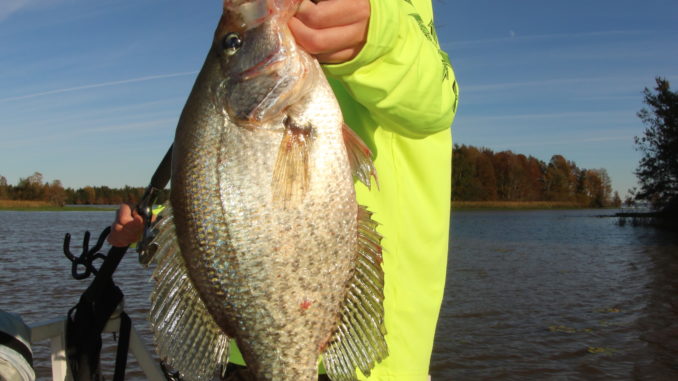
The fish are predictable, but this method isn’t
Willis Trapp has been fishing South Carolina’s Lake Wateree for three decades, and while he enjoys the warmth of spring, it’s December that gets him most excited about crappie fishing.
“There are fewer people fishing this time of year, but I’d be here even if that weren’t the case,” he said. “If you stick to the structure you’ll find on the main-river channel, you’ll catch your limit of crappie more often than not this month. The fish are very predictable.”
Trapp’s fishing method, however, is not predictable — at least not if you’ve watched the huge school of serious crappie anglers who rely almost exclusively on trolling. Trapp anchors down and casts to the fish, but he doesn’t do it blindly.
“I look on my (depth finder) and try to locate at least two good areas to fish that are within casting range of each other. It’s not hard to find,” he said.
Trapp looks for sunken trees or other debris on the edge of the river channel. When he has at least two located, he anchors in casting distance of both, then goes to work.
“I find plenty of these areas are on the lower end of the lake, within sight of the dam. Once I anchor down, I tie on a good slip knot, and if the debris I’m looking at is 45 feet deep, I’ll set my knot at around 43 feet. It takes time for the bobber to slip all that way, and if they’re pulling water, you’ll have to keep your bobber up current of the debris.
“It takes some figuring out each time depending on conditions, but your goal is to dangle those live minnows just above the structure,” Trapp said.
“I will put out three rods with slip bobbers on that piece of debris. Then I’ll do the same on the second piece of debris, and if I have a third I will do the same. It’s a lot to keep up with, but using an ultralight, 7-foot rod, the fish will hook themselves, so you lose very few fish, even though the rods are in rod holders. You want your rods at a 45-degree angle in the rod holder. That helps hook the fish,” he said.
“To me, this is easier than trolling, and your bait is always in the strike zone,” said Trapp.


Be the first to comment